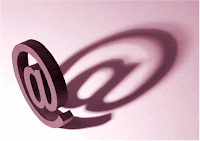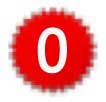It is always interesting and fun to swap personal productivity systems tips and techniques with others. How do other professionals organize themselves, their information and workflow? How do they keep their tasks and “to do’s” up to date? Do they combine home with work projects? All great questions that we have all pondered at one time or another.
Today I got to share some of my tools, and a central piece of this is my GTD-inspired notebook that corrals all my work and home processes. For years I have been a devotee of David Allen’s Getting Things Done (GTD) and have implemented a number of these techniques over time, and adapted them for my own purposes. The result is not 100% GTD, but warmly inspired by it (See this blog’s other tags for GTD to read more about how I use this interesting system). On today’s call, I offered to share my Tasks Notebook table of contents, and instead of writing an email I thought I would blog this – Linda, this is for you!
Getting Started: Hardware
I use an A5 notebook that has removable pages so that when pages get full I can simply replace them.
I have plastified tabs that separate major sections (see first photo). These are labelled as follows:
- Next Actions – the immediate next action on a project or task, organized by context
- Waiting – Things I am waiting for
- Projects – Activities that have more than one task (these can be work or home)
- Agendas – Pages for people that I talk to or work with regularly
- Someday/Maybe – Things that I don’t want to do now, but don’t want to forget
- Checklists – Lists that I have made once but will use again
- Email Work – Time Sensitive: These are emails that need to be sent quickly, their deadlines also show up on my calendar.
- Email Work: These are emails that need to be sent, but have more flexibility in terms of time, but are not in the Someday/Maybe category – yet…
- Computer Work – Time Sensitive: These are things that need to be done on my computer (writing, reading online documents, checking websites, signing up for things online, etc. in a time sensitive manner)
- Computer Work: Again less time sensitive but still needs my computer, including things I need to do online
- Office: Things that I can do in my office that don’t involve my computer. This can be reading hard copy, scanning a file, finding a business card, practicing my next toastmasters speech, etc.
- Write Blogs: I have a separate page for this to record my blog ideas, they were clogging up my Computer Work page, so I made a separate page for them.
- Email Home – Time Sensitive: Any email I need to write quickly that is home-related – like send an email to an internal listserve to find a pet sitter for my dog for vacation, etc.
- Email Home: Not time sensitive but again not on the Someday/Maybe list – for example, thank Grandparents for present (this should be on my son’s To Do list, but somehow is on mine).
- Computer Home – Time Sensitive: Fill in that accident form, rent a car for holiday, etc. Things that need to be done on the computer asap.
- Computer Home: These are online and computer-assisted tasks that are not as time sensitive – such as find the baseball schedule for spring, sign up for half-marathon in October, etc.
- (Note that when I am travelling I might start a page called Computer Plane/Train – which includes things that I need to do on my computer that I don’t need to be online to do)
- Home – Indoors: Things I need to do in my house (change light bulbs, make a list of household repairs, find the cabin key, organize the loft, etc.)
- Home – Outdoors: Things I need to do outside the house – like trim branches, put up the hammock, etc. These may be seasonal in which case I might write them on a paper and put them in my tickler file for that month. (My tickler file is a major life-hack for me, couldn’t live without it! Google it, there’s lots of ways to set it up.)
- Calls: Phone calls I need to make WITH the telephone numbers (no good just saying ‘call the orthodontist’ – then you should put it on your “Computer” list as you need to find the number before you call.)
- Errands: These are things I need to go out to do – buy slippers, turn in something to the lost and found, buy a baseball glove, etc. I organize these by place which can be shop (department store, grocery store, garden store) or the town where I need to go to get them.
Waiting Tab: Things I’m Waiting For
This tab only has two pages:
- Waiting for Work – Things I am waiting for comments on, things I asked people to do, things people promised to send me, things I lent that I am waiting to get back, payments for invoices sent, contracts promised, etc.
- Waiting for Home – Things I ordered online, money my sons owe me, phone numbers I asked for, dates for weddings, school photos delivery, etc.


















